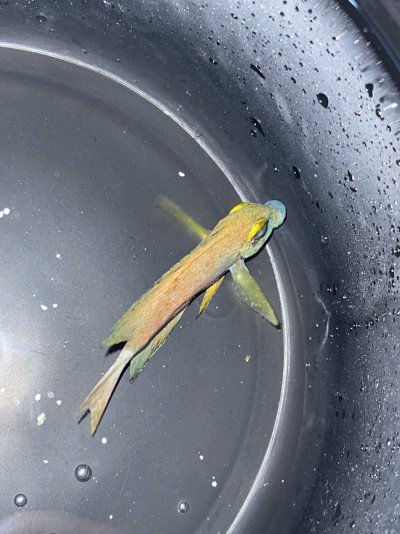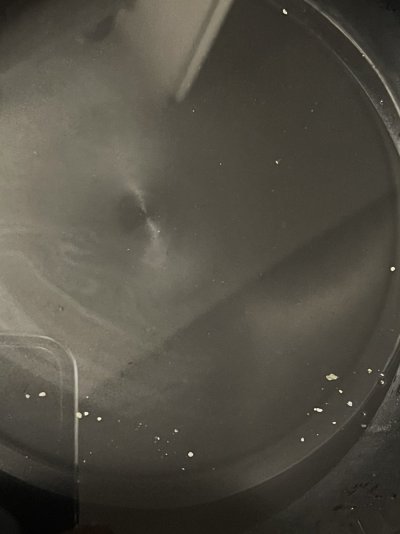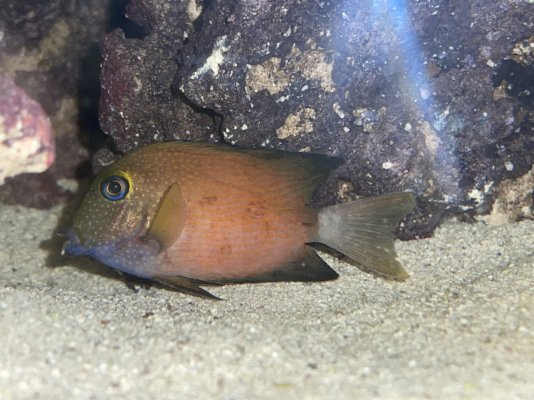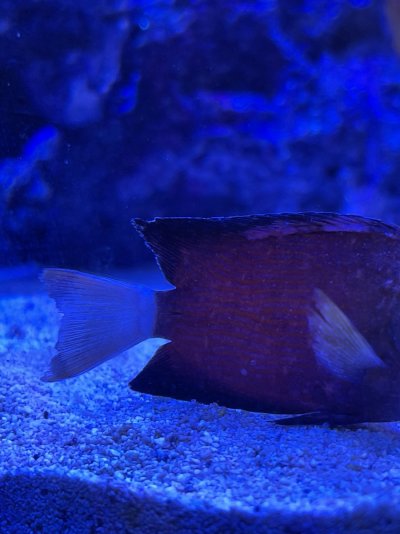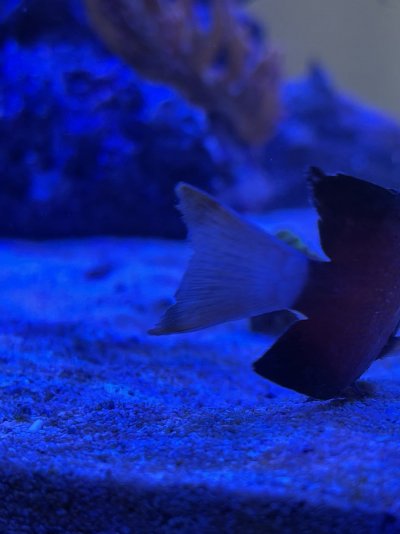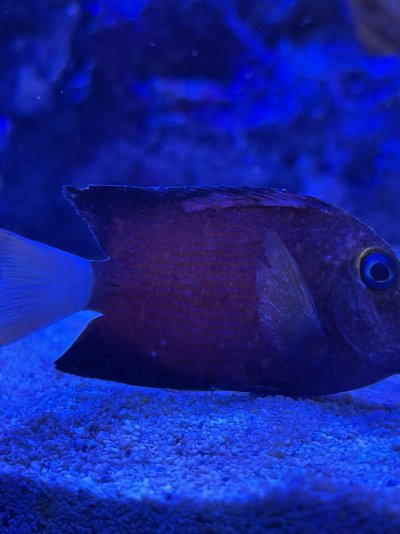So my white bristle tooth tang had white spots on its body that looked rather large to look like ich. I figured it might be due to abrasions since he loves to swim into all the crevices or maybe a sting from my rbta as he seems daring. He does visit my skunk shrimp quiet often for cleaning and he seemed to do better. Spots went away on the body but still some minor spots on the fins. He was very active and would swim everywhere with my carpenter wrasse as if they were best friends and would always be munching. When I would feed he would go into frenzy mode. The past couple of days he seems to be hiding in his cave and when feeding he’ll grab a bite or 2 and go back to hiding and he’s not swimming around like he used to. I managed to get a picture of him to help with identification. I had him maybe around 3-4 weeks at this point and he was in my LFS for about 2 weeks before I decided to pull the trigger on him and they treat and quarantine all fish and their fish tanks have copper treatment as well. No other fish are showing any symptoms however I found my black storm clown I added exactly 1 week ago was dead this morning. I’ll include photos of both. I did dip my dead black clown fish in fresh water to see if it was flukes and don’t see anything in the water.
temp is at 77.5-78.2
Salinity is 1.028
0 ammonia
0 nitrite
I don’t have a low resolution phosphate test kit yet but its showing under .25 on API
Ph runs from 8 during the day to 7.75 during the evening according to apex
Kh is 8
Ca 450
Mg 1320
I don’t have a QT tank as of yet just because all my fish have been sourced from the same LFS and they seem to do a good job on quarantining before hand but I do have a 5 gallon black bucket with a pump and heater if I needed to rig something up quickly
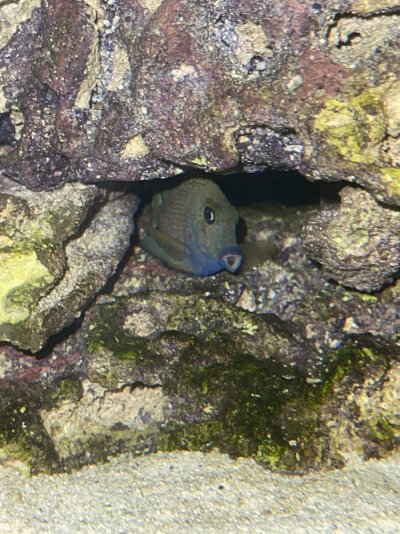
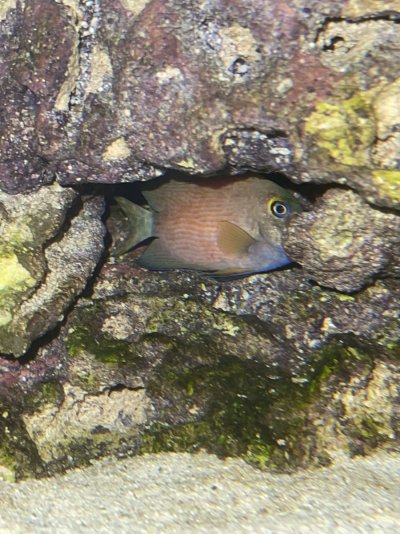
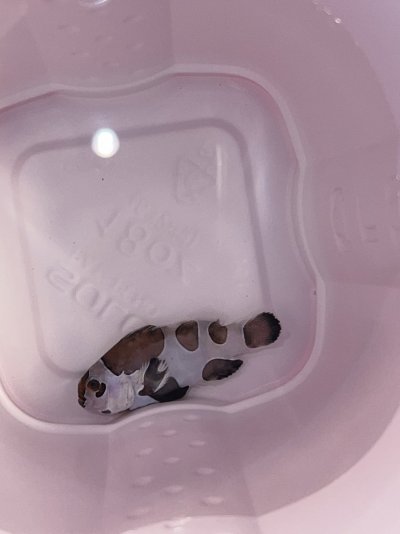
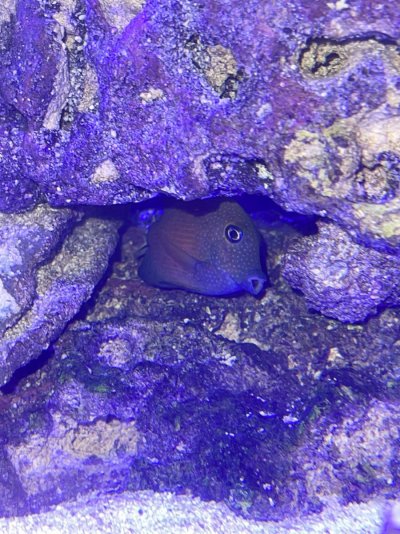
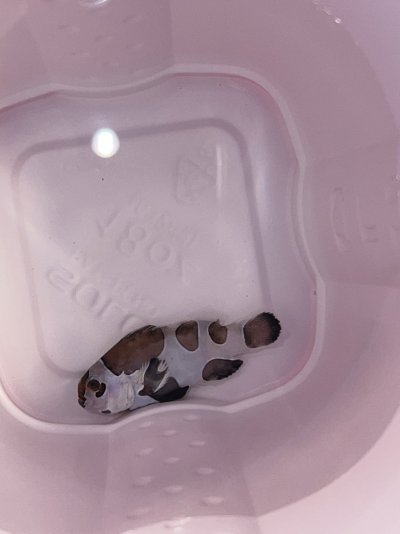
temp is at 77.5-78.2
Salinity is 1.028
0 ammonia
0 nitrite
I don’t have a low resolution phosphate test kit yet but its showing under .25 on API
Ph runs from 8 during the day to 7.75 during the evening according to apex
Kh is 8
Ca 450
Mg 1320
I don’t have a QT tank as of yet just because all my fish have been sourced from the same LFS and they seem to do a good job on quarantining before hand but I do have a 5 gallon black bucket with a pump and heater if I needed to rig something up quickly















